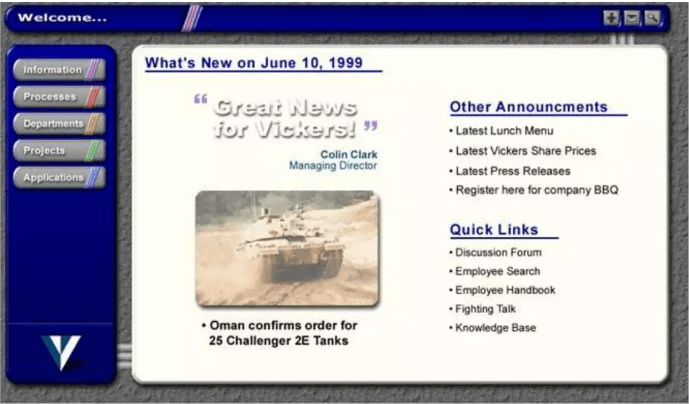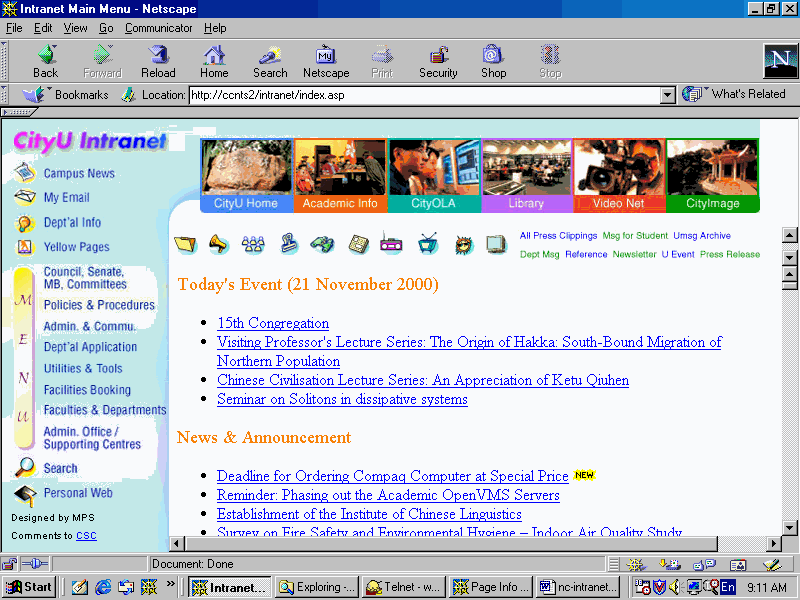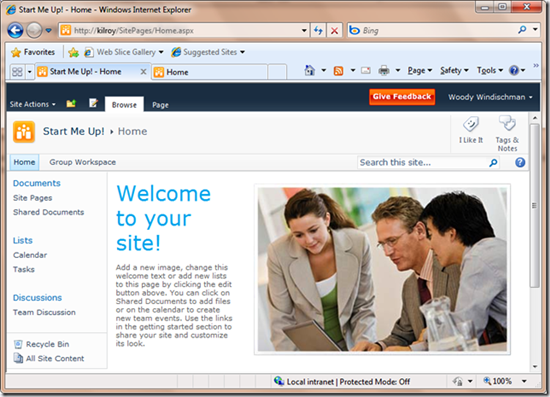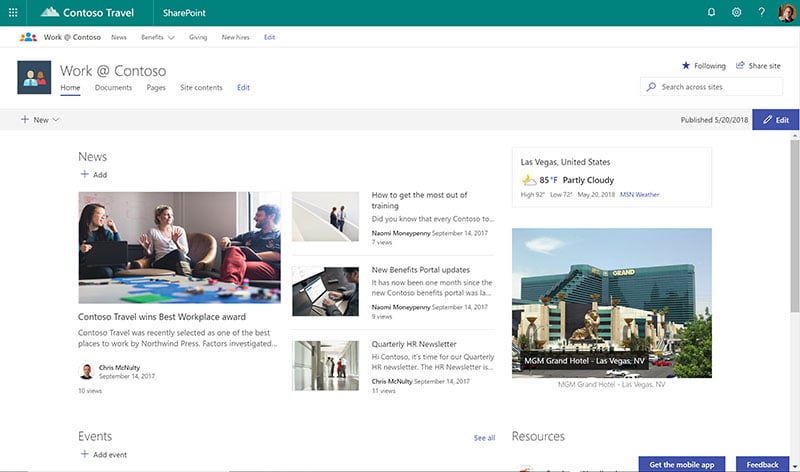Intranets have undergone a dramatic transformation since their inception in the '90s, evolving from simplistic internal networks to sophisticated platforms essential for modern businesses.
Intranets of the past were often perceived as cumbersome and limited. However, the evolution of workplace trends and technological advancements have led to the development of highly versatile and functional intranet systems. Today's intranets, sometimes referred to as Employee Intranets, are a far cry from the outdated versions of the past.
Rather than being rendered obsolete, intranets have only grown in importance over time, becoming an integral part of the modern digital workspace.
Decoding the Intranet: What Does Intranet Software Really Mean?
Intranet software may be perceived differently across various organizations. It could be an internal website, a communications hub, a set of collaboration tools, a knowledge sharing platform, or even a social network. There's no standard blueprint, hence the ambiguity surrounding the precise definition of an intranet.
Let's simplify it.
An intranet, in its fundamental form, is a private internal network designed to support an organization's employees. It enhances communication, collaboration, and information dissemination within the organization. Intranets form part of the digital workplace toolkit, which also encompasses collaboration tools like Slack and Teams, cloud-based productivity solutions, and traditional enterprise applications. This combination of tools culminates in the Digital Employee Experience (DEX).
Typical intranet solutions provide a desktop web-based interface offering features like calendars, project timelines, task lists, secure file sharing, and communication tools. Some prominent examples of current intranet offerings include Microsoft SharePoint, Huddle, Igloo, Yoobic, and Staffbase.
Understanding the Difference Between Intranet, Internet, and Extranet
Intranet, Internet, and Extranet serve as critical information pathways in today's digital age. However, their unique features lie in their accessibility levels.
The Internet, a globally accessible public network, contrasts with intranets, which are private networks exclusively accessible to an organization's members. Conversely, an extranet shares similarity with an intranet in terms of content, but extends its accessibility to authorized external parties such as customers, vendors, and partners.
The Rising Significance of Intranet for Today's Businesses
The Covid-19 pandemic revolutionized our work approach, catalyzing digital transformation for professionals across various industries. Gartner's research indicates that by the end of 2023, we can expect a 48% surge in permanent, full-time remote work arrangements.
The shift to remote work has altered communication dynamics, with intranets and other collaborative software becoming primary communication platforms. Without the appropriate toolset, the transition to remote work might risk employee engagement, especially as more employees move away from traditional workplaces towards roles akin to frontline or gig workers — a demographic historically noted for its low engagement.
Moreover, this engagement deficit carries significant financial implications.
How Modern Employee Engagement Platforms Evolve
Contrary to common belief, no intranet is intrinsically "excellent" or "inferior". It's the strategy and concept behind intranets that has evolved over time. To appreciate their contemporary form, let's trace their evolution with the changing trends.
1990s

Intranets made their mainstream debut in the mid-1990s as straightforward internal web pages, providing links and resources with an aim to enhance internal coordination.
1996
1996 witnessed a revolutionary innovation by Frontier Technologies, "Intranet Genie". This wasn't merely another corporate homepage but was equipped with features for document sharing, messaging, and more, promoting employee collaboration and communication. This marked the beginning of the inseparable bond between intranets and internal communications.
2000s

The dawn of the 2000s saw organizations incorporating Employee Self Service (ESS) into their intranets. The intention was to streamline HR operations and save time by enabling employees to handle more processes independently.
However, integrating portals with existing intranets for ESS functionality necessitated extensive customization, which made previous content management methods costly.
2010

2010 marked the rise of social intranets or interactive intranets, engineered to stimulate teamwork and knowledge exchange. They came with social media-esque features like comments, likes, interactions, and team rooms. Collaboration-focused Enterprise Social Networks (ESNs) like Jive, IBM Connections, or SharePoint were the primary software offerings.
However, social intranets had their limitations, mostly lacking document management systems or tools for executing other HR and business procedures.
2017

In 2017, Microsoft made significant enhancements to Microsoft 365, a prominent office software suite, adding Teams, Communication Sites, and Hub Sites. The objective was to control the Digital Employee Experience (DEX) space by amalgamating communication (Teams, Yammer, Outlook) and productivity tools (SharePoint, Planner, BI Portal, OneDrive, Word/Excel/PPT).
However, this abundance of tools ended up diluting SharePoint's value, leading to confusion about what precisely constitutes an intranet. For Microsoft 365, intranets were omnipresent yet elusive.
Today
Modern intranets, often termed Employee Experience Platforms, strike the perfect balance between simplicity and collaboration, positioning themselves between social intranets and Microsoft 365. They're highly personalized, mobile-first digital hubs that replace immediate collaboration in platforms like Slack or Teams.
In essence, modern intranets no longer consider collaboration and teamwork as their primary focus and requirement.
Leveraging Intranets to Amplify Your Internal Communications
In the modern workplace, the intranet has emerged as a vital tool in facilitating the employee journey. It serves as a personalized guide for those venturing into the digital workspace of the future. By enhancing four critical aspects of the employee experience, namely contribution, communication, learning, and empowerment, intranets are transforming workplaces.
Contribution: Harnessing the Power of Employee-Generated Content
In the fast-paced business environment, organizations need to tap into the potential of employee feedback for continued growth and development. As highlighted by Amy Jen Su, co-owner of Paravis Partners, a healthy conversation involves both speaking and listening. A contemporary intranet platform offers a space for two-way dialogue, capturing both structured (surveys, social walls) and unstructured (comments, likes) feedback. This enhances engagement, promotes networking, and facilitates shared experiences.
Moreover, a Salesforce report reveals that employees whose voices are heard are nearly five times more likely to perform their best work. An intranet platform can fulfill this need for open communication, leading to several benefits such as reduced risk through increased transparency, cost savings from actionable employee suggestions, and improved decision-making due to readily available information.
Communication: The Lifeline of a Modern Intranet
Communication has always been at the heart of intranet functionality. Today's intranets prioritize communication more than ever, offering features such as push notifications, group-specific channels, and custom-tailored communication for specific instances like onboarding. In an increasingly dispersed corporate landscape, internal communication becomes even more critical.
A modern intranet enables real-time alerts during crises, enhances visibility of compliance and security policies, reduces the need for printed newsletters, and accelerates the distribution of transformative information. It ultimately empowers employees with the knowledge of how their work contributes to the company's goals, reducing turnover and increasing independence.
Learning: Intranets as a Repository for Knowledge
The intranet can serve as a centralized hub for valuable information, housing data such as emergency procedures, FAQs, product details, and much more. To be effective, this information must be well-structured, easy to find, and devoid of unnecessary distractions.
Such a well-organized intranet reduces risk by making crucial processes easily accessible. It saves time and resources by minimizing repetitive queries and offers readily available information on products, campaigns, and current changes.
Empowerment: Encouraging Engagement through Practicality and Relevance
The distinction between learning and empowerment is subtle yet significant. While learning focuses on company-centric topics, empowerment targets the individual's daily work routine. The more relevant and accessible the information (staff directories, lunch menus, payroll information, vacation requests, etc.), the greater the employee's engagement with the intranet platform.
Intranet usage can be further increased by integrating self-service tools, appealing particularly to millennials and Gen Z employees who expect digital convenience at their workplaces. This empowerment leads to improved communication, learning, and collaboration, along with a reduction in administrative tasks related to employee services.
In conclusion, intranets play an integral role in amplifying internal communications, thereby driving improved employee experiences and business outcomes. By capitalizing on the potential of intranets, organizations can foster a more collaborative, engaged, and empowered workforce.







